
Application Note
Optimizing the labeling of proteins
Introduction
The Threshold ® Immuno-Ligand Assay (ILA) adapts reagents used in ELISA, RIA or radioreceptor assays for the Threshold System by covalently attaching biotin or fluorescein labels to the binding proteins and/or ligands. To simplify labeling and purification of proteins, Molecular Devices has formulated biotin and fluorescein as N-hydroxysuccinimide esters, called here Biotin Label and Fluorescein Label, respectively. The details of their use are described in the Threshold System Operator's Manual. This application note describes parameters which influence labeling of the binding proteins to be used in the Threshold ILA assay.
Labeling refers to either biotinylation or fluoresceination of proteins. Like any other chemical reaction, labeling is subject to conditions such as pH, concentration of reactants, incubation time and temperature, purity of reagents, and presence of interfering substances. Individual proteins have unique sensitivities to modification, reflecting in part the number of available lysine residues and their contribution to he structure, activity, and stability of the macromolecule.
For easy reference, store this application note in your Threshold System Operator's Manual.
Materials
1 Threshold® System from Molecular Devices Corporation (catalog #0200-0500), 1311 Orleans Drive, Sunnyvale, CA 94089, tel: 408-747-1700 or 800-635-5577.
2 Immuno-Ligand Assay Labeling Kit from Molecular Devices Corporation (catalog #R9002).
3 Immuno-Ligand Assay Detection Kit from Molecular Devices Corporation (catalog #R9003).
4 Sephadex® G-25 columns were purchased from Pharmacia Biotech (PD-10, catalog #17-0851-01).
General Recommendations
The following general recommendations on labeling are from the Threshold System Operator's Manual and serve as a guide for where to begin.
- Use phosphate buffered saline (10 mM sodium phosphate, 150 mM NaCl, pH 7.0-7.2), free of nucleophiles such as sodium azide, for the reaction.
- React with protein at 1 mg/mL, although concentrations as low as 0.1 mg/mL may be feasible.
- Try more than one molar coupling ratio during the initial studies of a new protein. Start with ratios of 10:1 to 40:1. React for 2 hours at 18-25˚C (“room temperature”) in the dark (i.e., in a lab drawer).
- Label enough protein to conduct the initial assay development. If using the sandwich format, 0.25 mg protein labeled at a single molar coupling ratio should suffice for the six optimization experiments; the competitive format should require less.
- Label larger quantities of protein once labeling conditions are optimized. After labeling, dilute in buffer with carrier protein and preservative, aliquot, and store frozen in order to assure maximal stability.
General Method
The experiments described in this application note employed immunoaffinity purified antibodies from goat, protein A purified murine immunoglobulin G (IgG), and bovine serum albumin (BSA). To label the protein, Biotin Label or Fluorescein Label was dissolved in dimethyl-formamide and added to the protein to achieve a final molar coupling ratio of 20:1. The reaction proceeded at 20˚C for 2 hours. Labeled protein was purified by gel chromatography on a Sephadex G-25 column. Absorbance was measured at 280 nm and 362 nm or 490 nm. Concentration and molar incorporation were calculated as described in the Threshold System Operator's Manual.
The molar coupling ratio (MCR) is defined as the moles of label per mole of protein in the initial reaction mixture. In contrast, molar incorporation ratio (MIR) is a measure of the extent of protein labeling and is the average moles of label covalently bound per mole of protein. On the following pages, we discuss the dependence of molar incorporation ratio upon:
- pH of the buffer
- concentration of the protein
- molar coupling ratio
- incubation time of the reaction
- concentration of NaCl in the buffer
- detergents in the buffer
- presence of interfering substances
This application note also discusses both optimal molar incorporation and the effects of unreacted or hydrolyzed labeling reagent left unseparated from the labeled proteins.
Buffer pH
Generally, proteins should be labeled at pH 7. The chemical reaction for labeling proteins with Biotin Label or Fluorescein Label is a nucleophilic substitution with the active nucleophile typically being the unprotonated epsilon amine of lysine in the protein. Since the pKa of the epsilon amine of lysine is about 10.5, a pH lower than 7 causes protonation of the epsilon amines and results in a very small proportion of amine groups being reactive. Raising the pH of the reaction mixture increases the concentration of hydroxyl ion, a nucleophile which competes for the label. Thus, there will exist an optimal pH for the labeling reaction.
The effect of labeling reaction mixture pH on the molar incorporation is seen in Figure 1. There was some labeling at pH 6. Buffer containing murine IgG was exchanged in Sephadex G-25 columns with 10 mM sodium acetate (pH 4.0), 10 mM sodium acetate (pH 5.0), 10 mM EDTA (pH 6.0), 10 mM sodium phosphate (pH 7.0), 10 mM sodium phosphate (pH 8.0) or 10 mM sodium borate (pH 9.0). IgG was diluted to 0.33 mg/mL in the appropriate buffer. NaCl was 150 mM. A high level of substitution occurred at pH 8 for both labels. Molar incorporation with Biotin Label became sub-optimal as the pH was increased to 9.0. This reduced reactivity of Biotin Label may be due to its decreased aqueous solubility at alkaline pH.
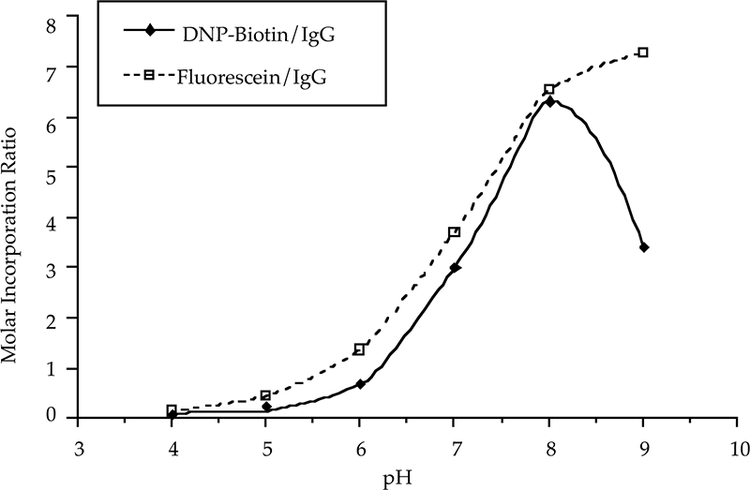
Figure 1: Influence of buffer pH on molar incorporation.
Proteins which are difficult to label may benefit from raising the buffer pH to 8 (or 9 for fluorescein). Labeling replaces a basic group on the protein with a neutral biotin group or an acidic fluorescein group, altering the isoelectric point of the protein. The protein may precipitate if the buffer pH is adjusted to the isoelectric point of the protein. Maximal labeling may be different from optimal labeling because high molar incorporation may reduce the stability of a protein. Some monoclonal antibodies have been observed to precipitate when reacted at a high or even moderately high molar coupling ratio.
Protien Concentration
Molar incorporation and reaction rate depend on reactant concentration. Figure 2 shows the effect on molar incorporation when the protein concentration is decreased while the molar coupling ratio is held constant (i.e., the concentration of the label is also decreased).
Murine IgG at 0.1, 0.25, 0.5, or 1.0 mg/mL reacted with Fluorescein Label for 2 hours at pH 7.0 at a molar coupling ratio of 20:1 resulted in molar incorporation of 2.7, 3.6, 4.2, and 5.0, respectively. Reaction of murine IgG with Biotin Label under the same conditions resulted in molar incorporation of 1.6, 2.6, 4.2, and 5.0, respectively. Comparing the two labels under these reaction conditions demonstrates that decreasing the concentration of Biotin Label had the greater effect in reducing the labeling reaction rate. The decrease in the concentration of the free label in the reaction mixture decreases the rate of label incorporation into individual protein molecules. If deficient molar incorporation is due to low free label concentration at low protein concentration, you may compensate by lengthening the incubation time and/or accelerate the reaction rate by increasing the molar coupling ratio. These are discussed in the following sections.
The lowest protein concentration shown in Figure 2, 0.1 mg/mL, is the minimum that can be easily analyzed spectrophotometrically for incorporation of Biotin Label.
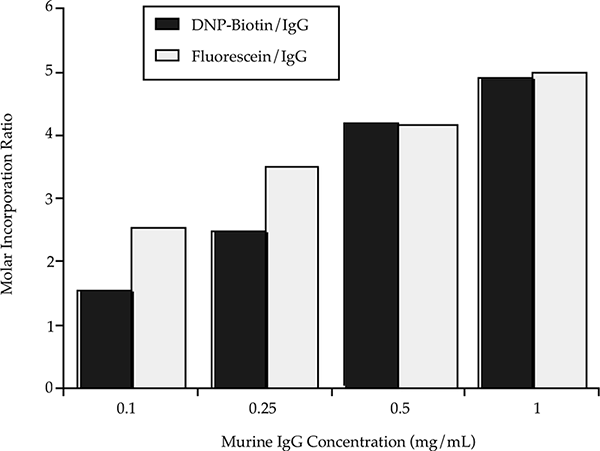
Figure 2: Influence of protein concentration on molar incorporation.
Molar Coupling Ratio
The molar coupling ratio is defined as the moles of label per mole of protein in the initial reaction mixture. When low concentrations of protein are to be labeled, a constant molar incorporation may be achieved by increasing the molar coupling ratio. There is no simple and reliable way to extrapolate the molar coupling ratio that will produce the desired molar incorporation for a given protein at a given concentration at a given time. Optimal labeling conditions should be established by varying the molar coupling ratio. The Threshold System Operator's Manual suggests trying molar coupling ratios in the 10:1 to 40:1 range for labeling antibody molecules. The suggested range of molar coupling ratios may require adjustment due to variation in molecular weight and lysine content of different proteins. A simple correction factor is the ratio of molecular weight of the protein to molecular weight of the immunoglobulin (160,000 Daltons). Increase the molar coupling ratio proportionately for higher molecular weight proteins and decrease it for lower molecular weight proteins. The ability of the protein to tolerate dimethyl-formamide will probably set the upper limit of the molar coupling ratio used; 5% dimethyl-formamide denatures some proteins.
The relation between molar coupling ratio and molar incorporation is shown in Table 1. Affinity purified goat polyclonal antibodies to murine IgG Fc and Fab regions were diluted to 1.0 mg/mL in phosphate buffered saline, pH 7.0. Biotin Label and Fluorescein Label, respectively, were reacted for two hours. The reaction volume was 330 µL and the molar coupling ratios were 5:1, 10:1, 20:1 and 40:1. Incorporation increased linearly with molar coupling ratios between 5:1 and 20:1. The total number of available amine groups on the protein sets the upper limit of molar incorporation.
Biotin/Anti-F
c
MIR
Fluorescein/Anti-F
ab
Table 1: Effect of molar coupling ratio (MCR) upon molar incorporation ratio (MIR).
Time Of Reaction
Figure 3 illustrates the molar incorporation of fluorescein into bovine serum albumin (BSA) as a function of time for three different protein concentrations at a constant molar coupling ratio (20:1). One mL PBS (pH 7) containing 0.5, 1 or 2 mg BSA was reacted with Fluorescein Label at a molar coupling ratio of 20:1 at room temperature. The final concentration of dimethyl-formamide was 4% v/v. Separate reactions were conducted for 15, 30, 60 or 120 minutes. The reaction was stopped by separation of protein and free label on a Sephadex G-25 column.
The time required to reach a molar incorporation of 3 in all cases was inversely proportional to the protein concentration; doubling the protein concentration approximately halved the time necessary to achieve the same molar incorporation. This effect is due to the low concentration of labeling reagent present when the molar coupling ratio is held constant and the concentration of protein is reduced. Incubation time may be lengthened to compensate for the reduced reaction rate due to a decrease in concentration of labeling reagent. Longer incubation at high pH may still not permit maximal labeling of antibody since the hydroxyl anion is a competing nucleophile. As a better alternative, the molar coupling ratio may be increased to accelerate the reaction rate as discussed previously.

Figure 3: Influence of reaction time and bovine serum albumin concentration on molar incorporation.
NaCl Concentration
Antibodies are often stored in buffers similar to physiologic saline (PBS). Ionic strength of PBS may affect the efficiency of labeling. The effect of NaCl concentration upon molar incorporation of biotin and fluorescein into murine IgG is illustrated in Figure 4. Murine IgG was labeled at 0.33 mg/mL in 10 mM sodium phosphate (pH 7) containing 10-500 mM NaCl.
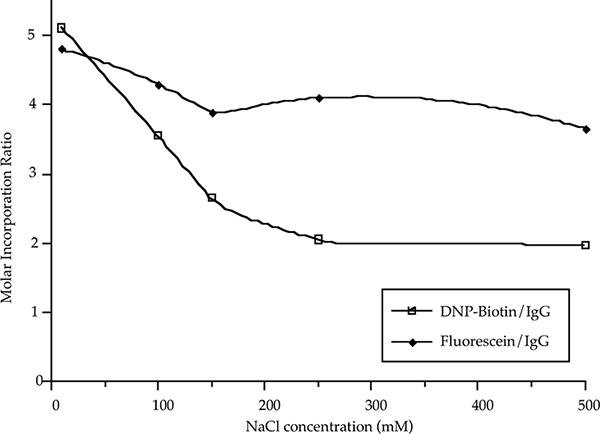
Figure 4: Influence of NaCl concentration on molar incorporation.
Varying NaCl from 10 to 500 mM had little effect on labeling murine IgG with Fluorescein Label. As little as 100 mM NaCl, however, had a marked effect on molar incorporation of Biotin Label into murine IgG. The effect of NaCl concentration on biotinylation might be due to a decreased solubility of Biotin Label at higher ionic strength. If high sample ionic strength is likely to cause poor biotinylation, the salt may be removed by dialysis, gel filtration, or other appropriate buffer exchange methods. Concentration of the protein may be needed after a salt removal step.
Detergents In Buffer
The influence of five different detergents upon molar incorporation of fluorescein and biotin into murine IgG is displayed in Figure 5. Murine IgG was brought to 0.33 mg/mL in 10 mM sodium phosphate (pH 7) 150 mM NaCl with either 7 mM Zwittergent (3-12), 25 mM CHAPS, 100 mM N-octyl ß-D glucopyranoside, 4 mM Triton X-100, or 0.4 mM Tween-20. In all cases, the concentration of detergent exceeded the critical micellar concentration (CMC). Zwittergent (3-12), CHAPS and N-octyl-ß-D-glucopyranoside were used at 5 times their CMC's, Triton X-100 and Tween-20 were used at 15 times their CMC's. Detergent type and concentration were selected to reflect common usage above the critical micellar concentration (CMC) for each detergent.
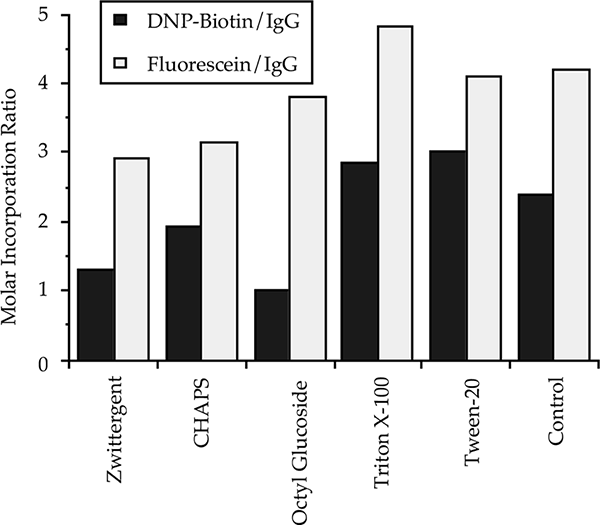
Figure 5: Influence of detergents on molar incorporation ratio.
Zwittergent and CHAPS reduced molar incorporation by 25% to 50%; the greater effect was a reduction in the incorporation of biotin caused by the ionic detergent, Zwittergent. The nonionic detergents, Triton X-100 and Tween 20, either had no effect or tended to increase incorporation of both fluorescein and biotin. The nonionic detergent octyl glucoside similarly had almost no effect on the incorporation of fluorescein but, somewhat anomalously, reduced biotin incorporation by 60%. The mechanism by which detergents with hydrophobic groups alter labeling efficiency may be the sequestering of the labeling reagent and/or portions of the protein into detergent micelles. The detergents tended to affect labeling with Biotin Label more than with Fluorescein Label, possibly reflecting the greater hydrophobicity of the former.
Detergent effects may be eliminated by removal of the detergent. Various manufacturers sell chromatographic materials for this purpose. If the detergent is critical to the solubility of the protein to be labeled, employ other measures to increase molar incorporation in the presence of detergent, such as raising the molar coupling ratio.
Interfering Substances
Non-protein nucleophiles present in the reaction mixture compete for the labeling reagent. Sodium azide is often used at 0.05% to halt microbial growth and, at these concentrations, competes well with the protein, reducing molar incorporation into protein. Similarly, contaminating irrelevant proteins provide competing nucleophiles in the form of lysine amines and will be labeled. Although the protein of interest may be satisfactorily labeled, the contaminating protein will interfere with direct measurement of the molar incorporation into the protein of interest. Equally important, the labeled impurity will affect assay performance if it is abundant enough to compete for the finite amount of either Enzyme Reagent or Capture Reagent. Figure 6 simulates this phenomenon by blending labeled irrelevant immunoglobulin with labeled specific antibody in a sandwich-type immunoassay.
The specific biotinylated capture antibody employed in the assay was affinity purified anti-murine Fc from goat (b-anti-Fc). Fluoresceinated, anti-murine Fab from goat was the second component of the sandwich assay. Murine IgG was the analyte at 1 ng per test. Urease labeled anti-fluorescein bound with the complex and caused the pH change measured by the Threshold System reader. Assays were constructed using either b-anti-Fc or b-anti-Fc plus a 30-fold excess of biotinylated nonspecific IgG. The latter mixture simulated polyclonal antiserum which had not been affinity purified.
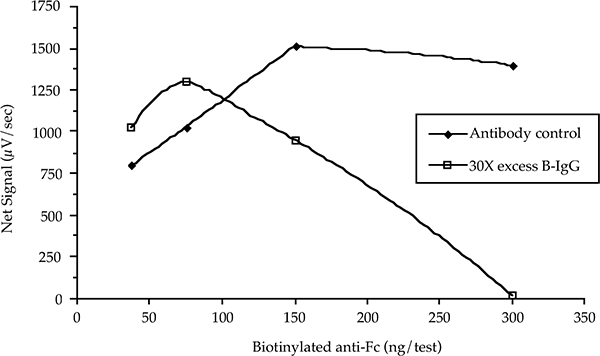
Figure 6: Effect of biotinylated nonspecific IgG on the performance of Threshold Immuno-Ligand Assay for murine IgG.
It has been observed that fluorescein labeling of certain small proteins can spuriously elevate absorbance at 280 nm when compared to the amount anticipated from fluorescein incorporation measured by absorbance at 490 nm. Net recovery of labeled protein, in these cases, often exceeds 100% of the expected recovery. If this occurs, the protein concentration may be measured by an independent method (such as the Bradford method). Poor assay performance may be caused by nonspecific binding of aggregated, fluoresceinated protein which results in elevated signal in the absence of analyte/antigen. It may be necessary to alter labeling conditions (for example changing the pH of the labeling reaction) in order to improve results.
Unreacted Free Label
The Threshold System Operator's Manual recommends purification of the labeled protein from the unreacted free label. The total amount of fluorescein and biotin binding capacity in the assay determines the amount of unreacted or hydrolyzed fluorescein and biotin labeling reagents the assay can tolerate. If Enzyme Reagent is added before the filtration step (Simultaneous format), such free label may reduce the assay response, especially if the label is fluorescein. There may be situations, however, in which this purification step is undesirable. The usual purification of the fluoresceinated protein might be omitted if the Enzyme Reagent is added after the filtration capture step, by slowly filtering diluted Enzyme Reagent past the complex captured on the membrane (Sequential format).
Results of a sandwich assay for murine IgG in which the performance of purified and unpurified labeled antibodies were compared are shown in Table 2. Affinity purified, goat anti-murine IgG Fc (anti-Fc) and goat anti-murine IgG F(ab')2 [antiF(ab')2] antibodies were labeled with Biotin Label and Fluorescein Label, respectively, at a molar coupling ratio of 20:1 for 2 hours at room temperature. Half of the DNP-biotin labeled antibody and half of the fluorescein labeled antibody were purified through Sephadex G-25 columns. The molar incorporations for the biotin labeled antibody and fluorescein labeled antibody were 4 and 5, respectively (i.e., unreacted or hydrolyzed label was present in 5- and 4-fold molar excess over b-anti-Fc and f-anti-F(ab')2, respectively.)
The purified and unpurified labeled antibodies were tested in a sandwich format assay for murine IgG employing the Simultaneous or Sequential format. In the Simultaneous format, b-anti-Fc and f-anti-F(ab')2 were present at 100 and 10 ng/ test, respectively, amounts previously shown to be optimal. Decreased signal in the Simultaneous format with unpurified labeled antibodies (“free label present”) suggests that label binding capacity may have limited assay response. In the Sequential format, both labeled antibodies were present at 100 ng/test and the signal achieved was greater than in the Simultaneous format. The sequential format had a much higher signal despite having 10 times the amount of free label, suggesting that the limitation was in the fluorescein binding capacity of Enzyme Reagent which was overcome by utilizing the Sequential format.
Unreacted, free label did interfere in the Simultaneous format, as shown by the decreased rate at 1000 pg of analyte. Utilization of the Sequential format eliminated this effect. The optimal amount of fluorescein-labeled binding protein in a Simultaneous format assay will usually be ≤25 ng/test due to the limited fluorescein binding capacity of the Enzyme Reagent.
Purified
Free Label Present
1648 + 106
824 + 70
137 + 12
139 + 12
Purified
Free Label Present
4902 + 194
4792 + 124
172 + 11
188 + 10
Table 2: Importance of removal of unreacted label for Simultaneous assays.
Optimal Molar Incorporation
Optimal levels of molar incorporation in polyclonal antibodies are 3-5 haptens per antibody. If the proteins to be labeled are extremely small or large compared to IgG, these values may be decreased or increased, respectively, to maintain the desired molar concentration of labeling reagent in the labeling reaction mixture. A somewhat higher molar incorporation for the fluorescein label may be optimal for the Sequential format. A rule of thumb is that most polyclonal immunoglobulins at 1 mg/mL will be labeled to the target levels mentioned above when the molar coupling ratio is 20:1.
Conclusion
The best molar incorporation and reaction conditions to obtain optimal molar incorporation will vary from protein to protein and should be determined empirically. The Threshold System Operator's Manual recommends reaction conditions found to be optimal with most IgG proteins encountered. This application note provides additional information about the interrelationship of labeling parameters in order to achieve optimal labeling with a variety of individual proteins and labeling conditions.
Learn more >>